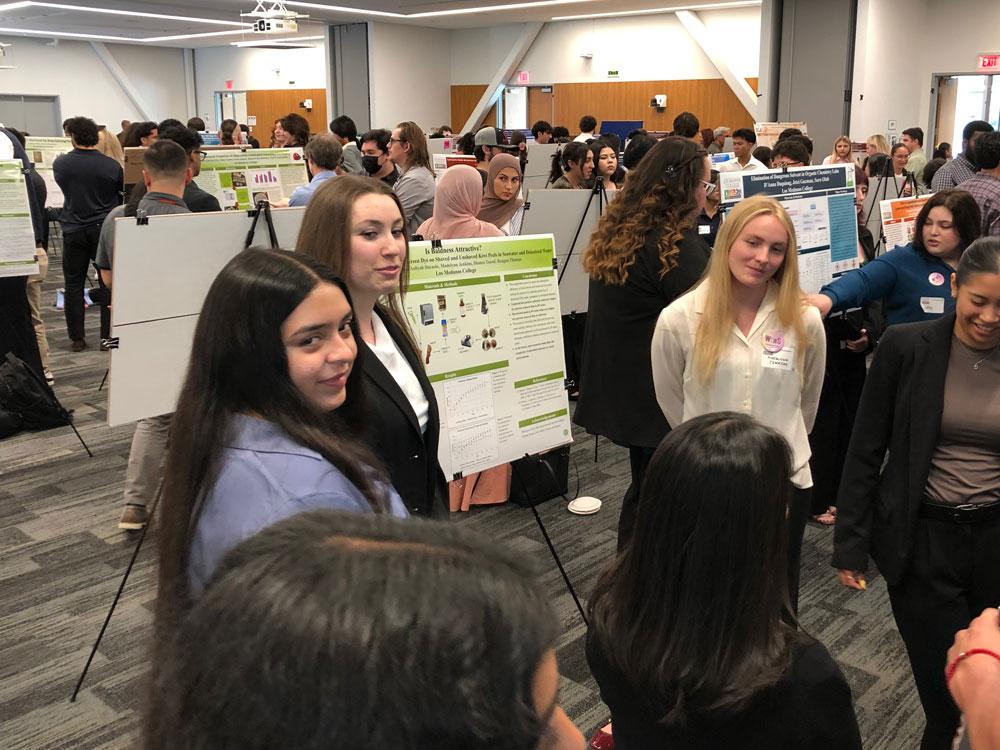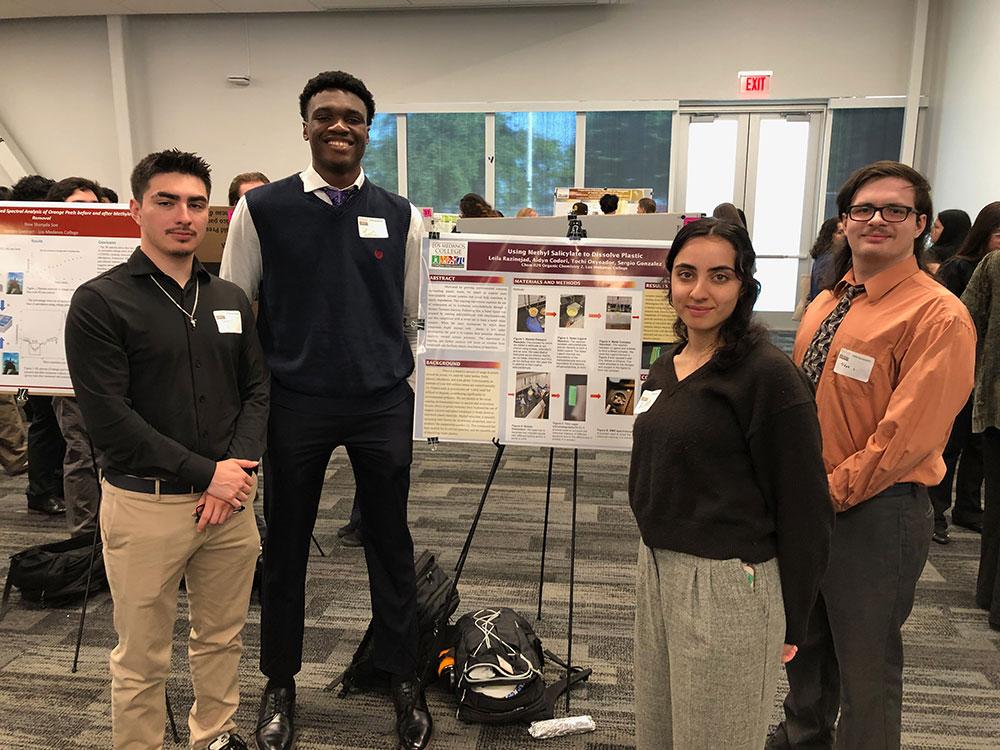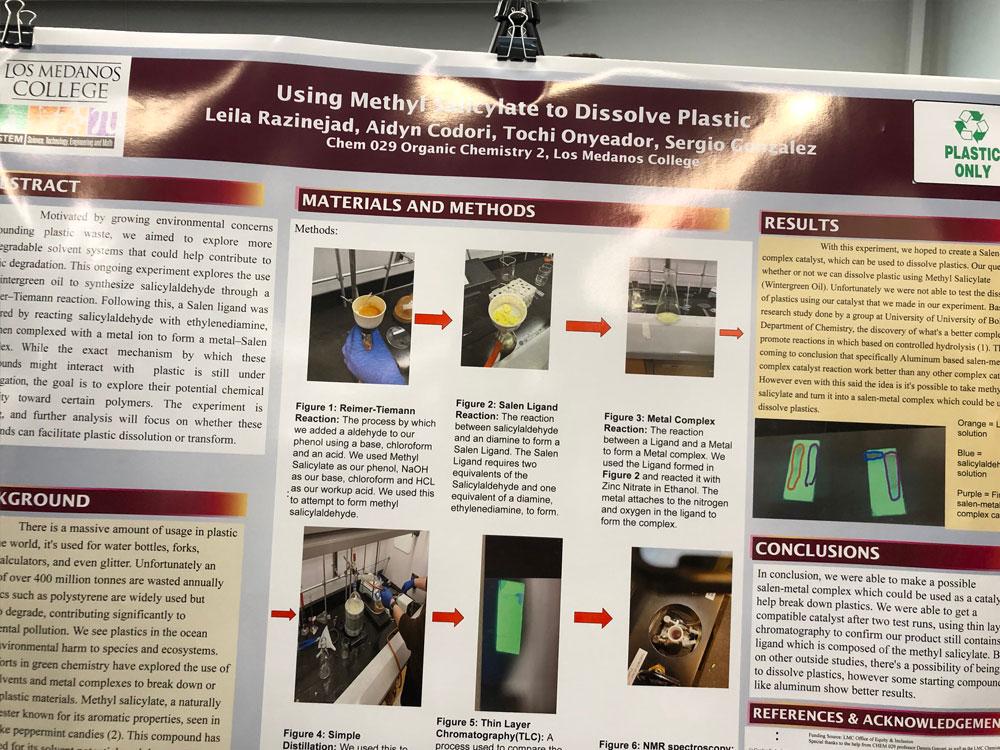200 students present research in biology, chemistry and organic chemistry
Media Contact: Juliet V. Casey, jcasey@losmedanos.edu, (925) 473-7322
Pittsburg, Calif. – During a field trip to Big Break, Mohammed Padilla and his classmates came across a pile of otter poop and it made them wonder. And that set them on their course to find out what effect, if any, otter scat has on the soil.
“Otters are considered a bio-indicator, in other words factors in the environment have to work well in order to sustain them,” Padilla said in presenting his research during the 2025 LMC STEM Research Symposium. “What we wanted to know was whether otters themselves affect the environment.”
So, first they determined what was in the scat – nitrogen, potassium, phosphorous, pH – and then identified sites that otters had used for their latrine. It turns out that otters leave the water to “use the bathroom.” The team then tested the soil and measured for elements found in otter scat, knowing that nitrogen and potassium are essential ingredients for rich soil that is good for plant growth.
“We found that otter scat could be a good alternative to artificial means of fertilization,” Padilla said. “Their scat is from a carnivorous fish diet, so it’s not fibrous, which I hypothesize would also help enrich the soil from microbes it contains. That would be the next question to explore.”
Padilla, a second-year biology major, was one of 200 presenters at the symposium, where students showcased research in chemistry, biology and organic chemistry.
“Our symposium has grown a lot since we first started in 2014,” said biology professor Briana McCarthy, who is also the faculty advisor for MESA at LMC. “We only had about 30 student presenters then.”
McCarthy said the symposium aims to give students experience in real-world research and provide them an opportunity to present in a professional setting.
“We know that giving students this opportunity translates to greater success in the next steps, ramping up their identity as scientists and giving them a place they can connect to a diverse audience to explain their research and see themselves in a professional light.”
Kimberly Figueroa said she enjoyed discussing her team’s research into whether shrimp shells seasoned with lemon pepper or cilantro could absorb pollutants from wastewater. Her team’s experiments did not go quite as planned.
“People usually just care about outcomes, so it’s nice to have a chance to explain our process and what we went through,” she said of the poster presentation.
Girlie Sison, a chemistry professor, said this year’s symposium also gave high school students an early look at STEM courses at LMC. More than 40 students from Deer Springs and Pittsburg high schools attended and participated in panel discussions with LMC researchers.
“We hope this gives them a sense of what is expected of science students at LMC and helps them prepare for what courses to take as they complete high school and start thinking about college,” Sison said, adding that many of the high schoolers in attendance already take college level courses through LMC’s dual and concurrent enrollment programs.
About Los Medanos College (LMC): LMC is one of three colleges in the Contra Costa Community College District, serving the East Contra Costa County community. Established in 1974, LMC has earned federal designations as a Minority-Serving and Hispanic-Serving institution. It offers award-winning transfer and career-technical programs, support services, and diverse academic opportunities in an inclusive learning environment. With exceptional educators, innovative curriculum, growing degree and certificate offerings, and state-of-the-art facilities, the college prepares students to succeed in their educational pursuits, in the workforce, and beyond. LMC’s Pittsburg Campus is located on 120 acres bordering Antioch, with an additional education center in Brentwood.





